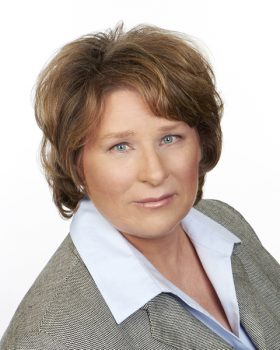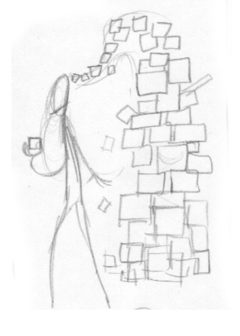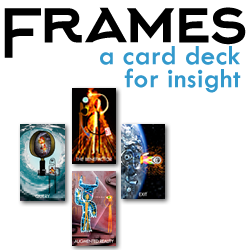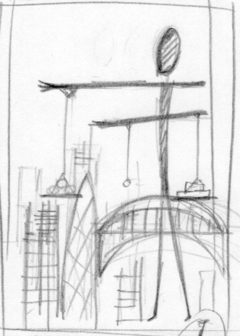About the author
 Frames author and designer is Melanie McCalmont. She is a professional in several fields ranging from aerospace to computer technology, with master’s degrees in Geography and Science Communication. She is a trainer, writer, and geographer. Melanie is the national expert on historic 3D relief models and is the author of “A Wilderness of Rocks: the Impact of Relief Models on Data Science” (2015).
Frames author and designer is Melanie McCalmont. She is a professional in several fields ranging from aerospace to computer technology, with master’s degrees in Geography and Science Communication. She is a trainer, writer, and geographer. Melanie is the national expert on historic 3D relief models and is the author of “A Wilderness of Rocks: the Impact of Relief Models on Data Science” (2015).
Why Frames is Based on Technology
The idea for Frames came while she was in Rochester, New York — a city that she often calls “the Silicon Valley of the 1880s.” Living temporarily there for research in 2018, she was immersed in Rochester’s deep history in tech start-ups such as Kodak, Xerox, Western Union, Bausch & Lomb, the first automobile patent, museum science, the first TDD system, etc. This tech, combined with the city’s outsized impact on social change–as the home of Susan B. Anthony, Frederick Douglass, education experiments, new religions, and civil service reform–caused her some interesting contemplation about how technology and science give direction to our spiritual and social lives. As a reader of Science News since 1990 and a lifelong traveler and student of communications, Melanie felt a calling to help others understand science and technology for its positive impact on spirituality, work, and family life.
This 2018 Rochester visit also came at a time of spiritual searching. Like everyone reading this, she struggled with divorce, loved ones dying tragically, financial challenges, isolation, work problems, self-doubt, regrets, and so on. Adopting a meditation and reflection practice for the last decade helped but still seemed to Melanie that it just wasn’t enough to just “sit.” Action was required.
The Idea
Melanie had been given a set of tarot cards as a gift, and she tried them as a tool for reflection—but the imagery and meanings were impossibly difficult to recall. Whatever mystical force they supposedly had seemed purposefully to require some kind of intermediary. The idea that a translator was needed to understand yourself was frustrating and at odds with what she knew about the role of neuroscience, psychology, physics, and computer science to understand “being.”
Worst of all, the tarot illustrations meant nothing to her, or to any modern person. What is a hierophant or the 5 of pentacles? How many of us put royalty at the top of the social pyramid or know the historical meaning of a white rose? Surely, there must be a more intuitive and modern way to use allegory! Why not make story cards for concepts we actually know and use now? Why not use the brain’s thirst for new connections and stories to mine the inner data we all have?
On the Bus in Rochester
The idea for Frames, as all good ideas, came while riding on the bus home after a day at work. Melanie was watching her fellow riders, students of every nationality and age–all looking at their cellphones instead of each other. Each of those students had a purpose for being right there, on that bus, to be colleagues, to move the mystery of their own life one more day forward. On that same ride, Melanie was writing about the history of spiritualism and science in Rochester, the technology hub of early America.
Our lives are like technology hubs, she thought. It’s science and not mysticism. Each sense, each experience, each thought is stored. Why not combine our natural delight in mystery and synchronicity with our equal love of technology and science? Yes!
Technology and Art + US and UK

Melanie listed all the technology concepts she was familiar with, from data lakes to web user experience. By some cosmic dice roll, she connected with UK artist David Hallangen on Twitter, and he was immediately hired. David is deeply gifted and understood the goal of building visual allegories that would prompt someone to break out of their worn thought patterns and consider new options. Work on the Frames deck was performed in Rochester, Washington DC, Albany, Middletown CT, Philadelphia, Fayetteville NC, Madison, and Chicago. Conversations about the meaning of life, death, science, the soul, work, technology, and art were held with many colleagues. But you know who you are, with thanks. Work was completed in 2019.
Why is it called Frames?
A frame in computer technology is an array (set) of data that has an almost physical dimension. A data frame can gold various types of data, all mixed and ready to interrogate. A frame is also a way to narrow your focus temporarily, to look through and partition off. Thus when doing structured self-reflection or jumpstarting a creative process, it helps to define the focus (the Frames question) but to explore its array of data (inner data source). So many more analogies exist! have fun exploring your inner data.
The Frames card deck and user guide are certain to be a useful tool for anyone committed to understanding their own lives, or thoughtfully helping their work colleagues or loved ones to solve problems. It takes no special skill to use–other than a willingness to face your own inner data and take small, incremental steps forward.
Thanks to Carl Sagan
P.S. Melanie is grateful to the estate of Carl Sagan for reviewing my user guide and providing permission to use his quote in the front of the Frames User Guide.

